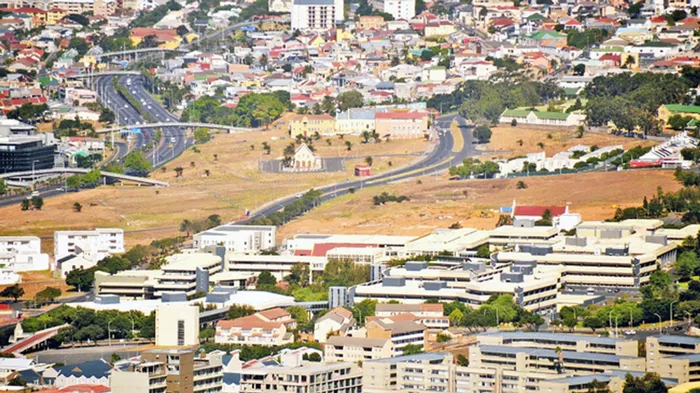Call for ideas to shape look and feel of District Six

The City says it wants to develop District Six’s public spaces in a way that recalls what it looked like before the forced removals.
The City wants District Six residents to contribute their ideas to the municipal planning that will shape the look and feel of the area.
A draft neighbourhood plan, or Local Spatial Development Framework, as the City calls it, seeks to involve residents in planning decisions. The City started working on the plan last year, and, on Tuesday, it hosted a virtual meeting about the next step: deciding on the development of public spaces with input from residents.
While the national government is responsible housing District Six claimants, the City is responsible for the public spaces, including the streets, squares, parks and pavements. And the City says it wants to develop these in a way that recalls what District Six looked like before the forced removals.
Khalied Jacobs, the director at Jakupa Architects and Urban Designers, which is the company responsible for the architectural design of the District Six housing project, said: “Back in the day, District Six’s main public space was in the streets. We hope to design future buildings which can relate to those buildings during that period. We can't fully replicate what existed in the community of District Six back then; however, there is a lot of knowledge that rests with the people who lived in District Six and we hope to incorporate this knowledge into the process of building the future of the area.”
Marian Nieuwoudt, mayoral committee member for spatial planning and environment, said residents who wanted to share their insights would need to attend workshops, represent the different interest groups and report back on the process.
The representatives would be sought in the coming weeks, and they would work with consultants on behalf of the community, she said.
District Six Working Committee spokeswoman Karen Breytenbach said it was unrealistic to expect District Six to look exactly like it had done in the past.
“People have been forcibly removed, but their families have grown in the interim, so the same people who have claims have much larger families. There is, however, not enough land for every person.”
It was important to leave space for parks, and the streets needed to encourage community life, she said.
“We need to balance heritage with the kind of neighbourhood we want to create for the young people coming back. Harrington Street and East City area are a creative, vibrant hub for young people; many artists have studios there. There are restaurants and businesses where our young people can find employment and mentorship opportunities.”
Liezel Kruger-Fountain, the head of the City’s sustainability unit, said: “The sense of community happens in the public spaces, such as streets. Some of these streets are currently full of cars, but we need to find those clear spaces that can allow for gatherings and for people to come together.”
It was hoped that the roots of District Six could be put back in the right way, she said.
After the workshops, the design principles will be presented to the community for further comment.
All registered interested and affected parties will get emails asking them to nominate a representative to take part in the workshops, which will take place in person, depending on Covid-19 safety regulations. Email D6.publicrealmstrategy@capetown.gov.za, for more information.